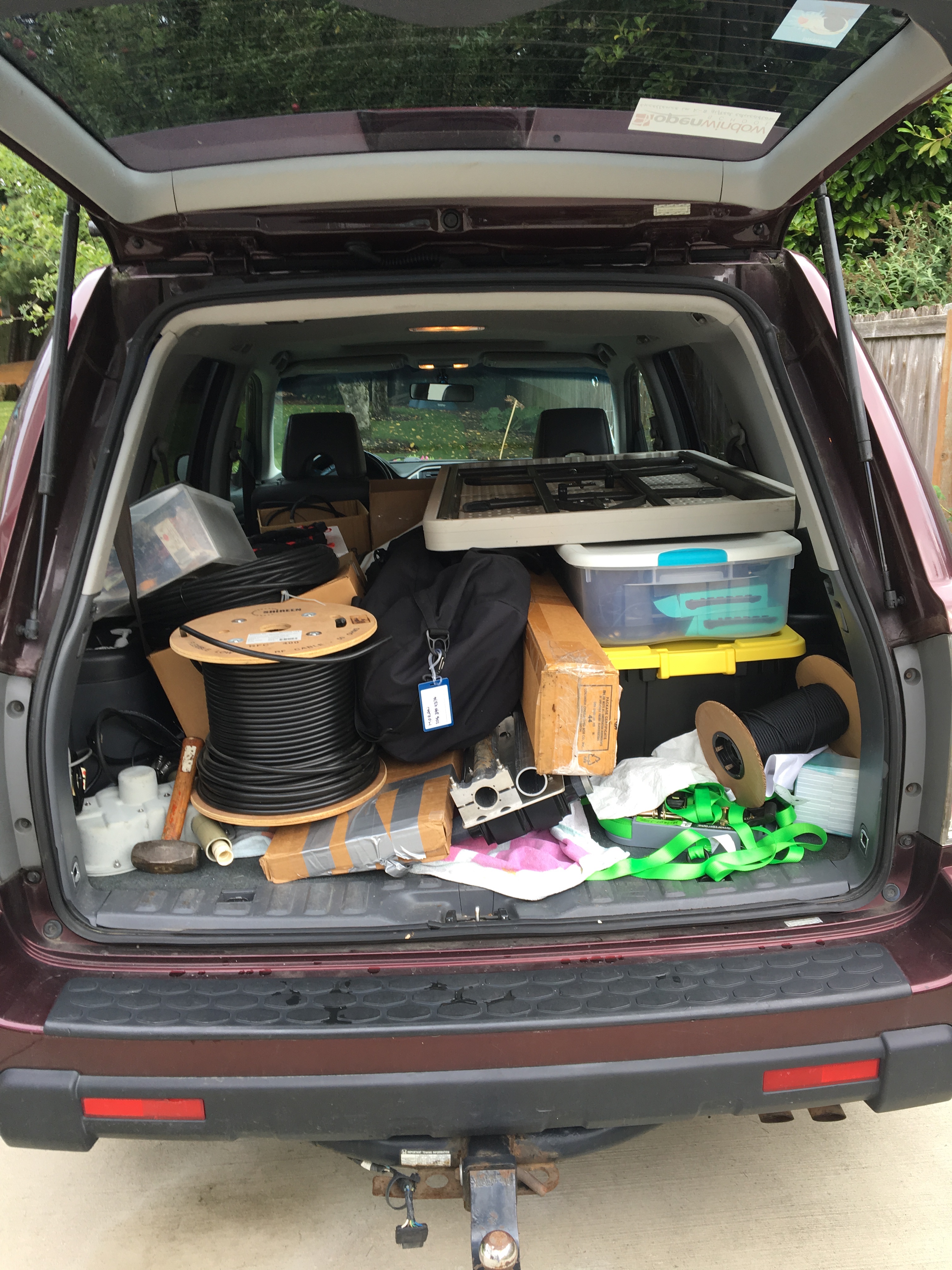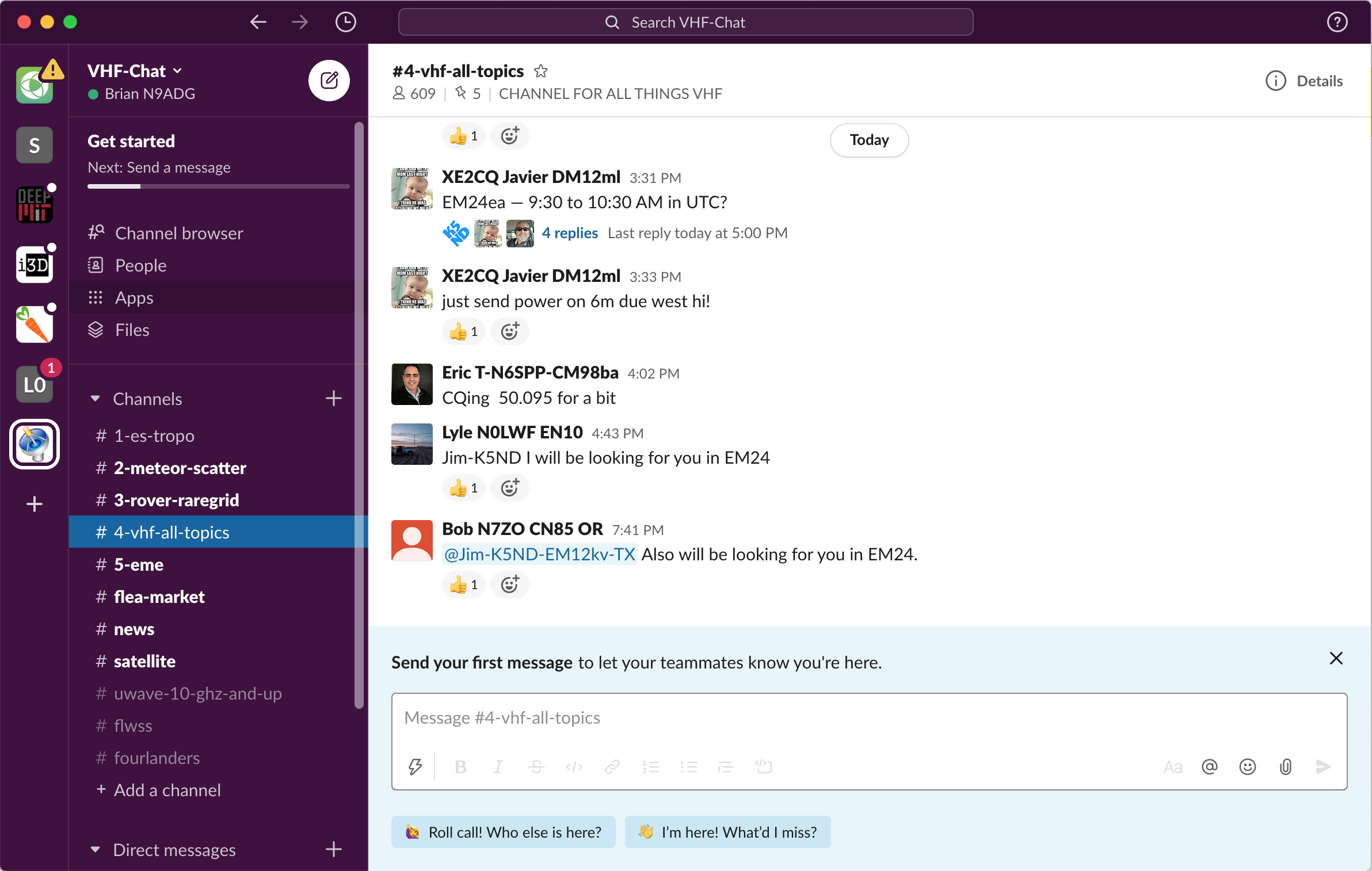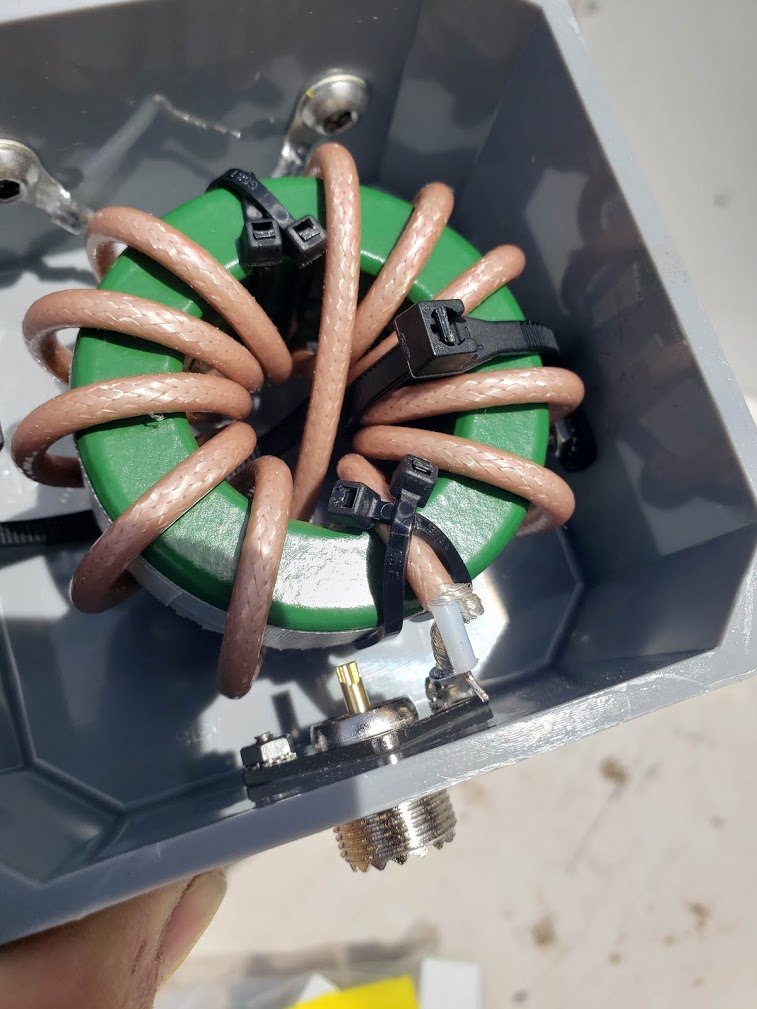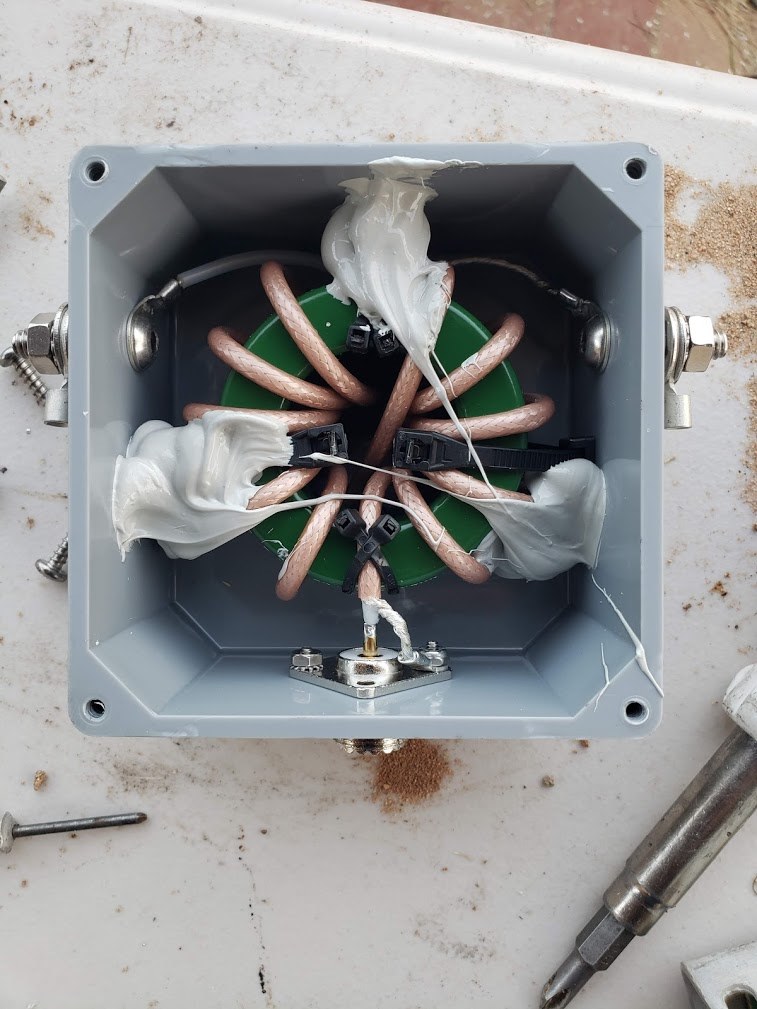 June 10, 2020 Editor: Paul Bourque, N1SFE | |||||
IN THIS ISSUE
Most radios these days have versatile built-in electronic keyers for sending CW. They can operate in a number of different modes, but if used with a dual lever paddle, the idea is that independently pressing one side of the paddle generates dahs, while pressing on the other side generates dits. DX Engineering's blog discusses different key or paddle options in "Choosing a Key or a Paddle." Once you're able to send dits and dahs with a paddle, everything else is practice and preference. There are conventions - for example, most of the time, the right lever is the dah, the left the dit. It's good to stick with conventions, just in case you find yourself in front of someone else's radio, or you share your station with a friend. There are some sending styles for minimizing hand movement with a dual lever paddle, generally falling under the name of iambic sending. KB6NU discusses how to learn to send iambically, but it involves pressing the right or left paddle for more than one element time, and potentially "inserting" code elements by pressing the other paddle simultaneously. Conditions have been pretty good on 6 meters in the last week, with stations in the US able to work stations in the EU and AF due to sporadic e propagation. It's a seasonal thing, which is why the SMIRK and ARRL VHF Contests are this time of the year. This should be a hint that the higher bands, like 15 and 10 meters, could be open too. BUSTED QSOS Many wrote in last week noting that Gene Zimmerman's call sign was W3ZZ. Also, a couple of sharp-eyed readers noted that while it's possible to make a Beverage antenna taut, they don't really learn much in the process - they can't be taught. Complete information for all contests follows the Conversation section 11 Jun - 24 Jun 2020 June 11 June 12 June 13
June 14 June 15 June 16 June 17 June 18 June 19 June 20
June 21 June 22 June 23 June 24
This upcoming weekend is the ARRL June VHF Contest. The magic band has been hopping as of late. Don't get stuck only on FTx modes -- give CW and SSB a try if the band is open for potential higher rates. The ARRL Field Day operating event is the June 27 weekend and for 2020 there are some rule waivers. Important changes include that "D" stations can work other "D" stations for points, and that individual stations using their individual call signs submit their scores separately; entries using the same club name (make sure everyone agrees on the same exact spelling) will be aggregated under that club's name in the results. To help address questions that might come up with the rules waiver, ARRL has published an additional FAQ for this year's Field Day event. Scott, N3FJP, reminds that users of N3FJP's Field Day Log should upgrade to version 6.3 in preparation for the 2020 rule changes. Scott has published a FAQ on using his popular software for Field Day, including how to operate to adapt to the 2020 rule waivers. Thirteen to eighteen-year-olds who are technology enthusiasts are encouraged to take part in the GitHub-sponsored Summer HackClub event. With $50,000 in hardware grants sponsored by GitHub, Adafruit, and Arduino, opportunities for mentorship, and a structured schedule of events and interactions, it's an opportunity for collaboration and learning. EI7GL's blog has devoted two entries to the "amazing" 5600 km 2 meter opening from Cape Verde Island to Poland. The articles mention that the opening may not have been possible were the stations not using FT8, because the signal levels were so low. The distances covered would encompass the path between Cape Verde and the eastern US - if everyone were pointing their antennas in the right direction. While you're there reading those entries, check out some of the others on license-free frequencies in the EU, solar eclipse experiments, FT8 moonbounce on 70 centimeters... Bob, K0NR, blogged about Carlos, KD9OLN, being "parachute mobile" on 2 meter FM. This might be a little more exciting than a quick satellite pass, for all involved. We have four-hour sprint events, but how about an 8-minute plummet? Seriously, check out the video, and then Carlos's operating tips in the YouTube video comments. For example: "The channel becomes congested above 3,000 feet. I was picking up all sorts of non-stop chatter from the moment I powered up at 13,000 or so. There were ZERO breaks so I had to take a chance and just key up the microphone and start calling CQ for those who could hear me. Once I got under 3,000 feet, the chatter slowed down." Dennis, N6KI, writes that "Photo Finish" comes to mind describing the contest between Axel, KI6RRN, and Danny, N6MJ, in the recent CQ WPX CW contest: "Wowzers!! In the WPX CW SO AB HP (non-Assisted) Category Axel, KI6RRN, operating as NO6T@WA6TQT, may have beaten Danny, N6MJ, operating as ND7K@N6WIN, by just one or two Foreign Qs/Mults. The 8- to 9-month wait for Official Log Check Report will be unbearable! With very short notice, Axel had to socially distance himself from WA6TQT site owner and had to cobble together a viable remote setup. Danny operated BIC (Butt In Chair) at N6WIN site. I know Axel could have done even better if he had been BIC like Danny was! What a monumental reported win for Axel, who's on a tear to get to WRTC in Bologna, Italy in 2022!" You can read N6MJ's report of his WPX contest operation, which includes "A huge congrats to Axel, KI6RRN, for his tremendous score from NO6T. I was pushing really hard the entire contest, and still found myself behind all weekend. We ended in a virtual tie, but I have a feeling Axel will pull out the win after log checking. He hasn't had a ton of competition from W6/W7 over the last year or two, but he is the real deal. I am excited to see how he does in the next WRTC."
Another instant messaging service resource for VHF operation: The VHF-Chat on Slack. Participation is free. There were 609 listeners on the VHF-All-Topics channel recently. The flea-market channel had a couple of attractive ads for 6 meter SSPAs. Iambic As it pertains to ham radio, a description of a type of keying where characters are formed by causing dits and dahs to be generated by combinations of independent and simultaneous use of independent paddles with an electronic keyer. "Iambic" more generally means a rhythm or pattern of words where an unstressed syllable is followed by a stressed syllable. Tim, K3LR, always seems to have a project going. His latest is the assembly of a two-element 40 meter Moxon beam. Tim talks about many of the small details that add up to a successful project. Steve, VE6WZ, has provided a video that "shows the design of my cascaded two-relay high isolation four-relay switch box, as well as my latest design that uses 1:1 binocular core 'braid breaker' transformers to replace my large type 31 toroids on the RG-6 lines" for switching his Beverage antennas. (TopBand reflector) The Central Arizona DX Association's June meeting featured Petr, AG6EE. Petr has been roving on 6 meters, providing rare grid squares, mostly in Nevada. In the CADXA video on YouTube, Petr provides practical advice on how to be prepared for a harsh desert roving environment, along with details on the equipment and preparation that helps him be successful. Results from the SARTG HNY 2020 Contest are available on the www.sartg.com website. Certificates for those that qualify will also be available soon according to Ewe, SM7BHM, SARTG Contest Manager. (via RTTY Reflector) Raw scores for the CQ WPX CW Contest are now available. These are BEFORE CHECKING, so expect them to change. When to Log the QSO in an FTx Contest Contact Ed, W0YK, has updated the World Wide Digital DX Contest website's operating tips to include additional information in reaction to high NIL rates in the last contest. Here's just one of many tips from the website: "Log the QSO when you receive RR73, RRR, or 73 from your QSO partner" which should be read in conjunction with the explanation of what constitutes an acknowledgment in a contest exchange.
Hector, XE2K, posts interesting pictures from his tower business on Facebook. Many of these highlight that a radio tower is a harsh environment for electronics and mechanical assemblies. It's important to make sure that what you're putting into the air is secure electrically and mechanically. Recently, he posted a picture of a boom-mounted ferrite-material toroid that wasn't mechanically secure inside a plastic box, and furthermore had a quality control issue where there was a distinct lack of solder on a connection. It required a trip up the tower for a repair, which consisted of soldering the connection and securely attaching the toroid inside the box with an adhesive. The "South Atlantic Anomaly" (according to Wikipedia) "is an area where the Earth's inner Van Allen radiation belt comes closest to the Earth's surface, dipping down to an altitude of 200 kilometres (120 miles). This leads to an increased flux of energetic particles in this region and exposes orbiting satellites to higher-than-usual levels of radiation." Scientists think that the Earth's magnetic field is gradually weakening in this area, so the European Space Agency has targeted this area with a swarm of satellites to understand it better. The threat to satellites is more than just radiation: according to a post to the Risks Digest email list, Dave Lesher, WB8FOZ, points out that: "Some/many satellites use magnatorquers; electromagnetic coils energized to work against the planet's field to rotate/stabilize the satellite in all three dimensions, necessary to optimize antenna and solar cell aiming. Unlike thrusters, magnatorquers have an ongoing fuel supply. However, when the Earth's field weakens, it will take more current through the coils to get the same torque. That in turn impacts the energy budget." SP5XMU's website records his VHF/UHF Contesting and accomplishments along with technical information on his station and projects. One recent project was the adaptation of a UMTS Solid State Power Amplifier for use on the 13 centimeter ham band. There's a lot of nice detail in this describing the design and operation of the original circuit, necessary changes to get it onto the right frequencies, and practical considerations of working on this amplifier. He does not skimp on the warnings about making sure all shielding is in place, since these frequencies are capable of heating human tissue. While the surplus equipment he used may not normally be available in the US, anyone building with LDMOS FETs will appreciate some of the mechanical and electrical techniques he shows in his supplementary instructions. If you have a 2.4 GHz radiator, how can you be sure there's RF? Here's a way to do it for under 1 Euro, using a germanium diode. The right way to do soldering involves fume removal hoods and other safety equipment. In the old hobby days, without ventilation, it always seemed like the smoke from the rosin flux wanted to flow towards the solderer. It turns out that solder smoke "always finds your face." While spelunking around the ContestCalendar website the other day, I came across what appears to be a canonical list of all of the "Contest Names" that go in the header of a Cabrillo file. Contest Sponsors: If you're starting a contest, you eventually want to be on this list, and you definitely want to choose a name that isn't a conflict with one already on this list. DL3LSM's blog has a couple of articles that will be of interest to Mac users. "xKEY -- A Remote Keying Interface for the FlexRadio 6000 Series" talks about how he implemented a way to connect a straight key or paddle to a Flex 6000 series radio with a local sidetone. It builds upon a previous project of his "Using A Teensy As A CW Keying Interface" which adapts K3NG's Keyer project to use a low-latency MIDI facility on the Mac. Along the way, the articles reference other resources for Mac-using Flex owners, for example K3TXR's xSDR6000 and the underlying library. Getting Ready For Remote Can Improve Local Operating Kelly, N0VD, has been tweeting about getting his station ready for remote operation. It caused me to think that just 4 years ago, using a station remotely was seen as exotic, complicated, and threatened amateur radio as we knew it. Today, people accept that most new ham gear has a network interface, though they may not use it. Operating remotely today is a checkbox on a score submission to 3830, and maybe a mention in a soapbox comment. While it was notable in 2019 that people were "Winning a Contest Using A Remote Station" (a presentation by Chris, KL9A; Kevin, N5DX, and Nate N4YDU at the 2018 Hamvention Contest Forum), for the 2019/2020 contesting season it's probable that there already have been multiple remote "wins" in single and multi-operator categories - we'll find out for sure when the official contest results are published. For the SO1R station, one of the benefits of going remote is that the underpinnings will also make the station better for in-person contesting - the ability to perform all station operations from the station computer desktop. Most successful modern contesters don't actually touch the radio or other equipment much - they are more concerned about entering contacts, and of course, the rate. Everything must be performed from the computer keyboard (or keyboards!) This includes all band changing, antenna switching or antenna rotating, receive antenna switching, amplifier control, station monitoring, etc. How you get there is up to you. You could roll your own station automation solution by using something like Node Red, or you can investigate some of the excellent off-the-shelf solutions for the different aspects of the problem. You can test your solution by only using the keyboard and mouse for an entire contest. If you take these first steps, you'll find that you understand more about how to streamline actions during a contest, resulting in fewer mistakes in the wee hours of the night, and more time to make contacts. Those are benefits that can be felt no matter where you're operating. That's all for this time. Remember to send contesting related stories, book reviews, tips, techniques, press releases, errata, schematics, club information, pictures, stories, blog links, and predictions to contest-update@arrl.org 73, Brian N9ADG 11 Jun - 24 Jun 2020 An expanded, downloadable version of QST's Contest Corral is available as a PDF. Check the sponsors' website for information on operating time restrictions and other instructions. HF CONTESTS CWops Mini-CWT Test, Jun 11, 0300z to Jun 11, 0400z; CW; Bands: 160, 80, 40, 20, 15, 10m; Member: Name + Member No., non-Member: Name + (state/province/country); Logs due: June 13. RTTYOPS Weekend Sprint, Jun 14, 1600z to Jun 14, 1959z; RTTY; Bands: 80, 40, 20, 15, 10m; [other station's call] + [your call] + [serial no.] + [your name] + [6-character grid locator]; Logs due: June 21. VHF+ CONTESTS SMIRK Contest, Jun 13, 0000z to Jun 15, 0000z; CW, Phone; Bands: 6m Only; 4-character grid square + SMIRK No. (optional); Logs due: August 16. REF DDFM 6m Contest, Jun 13, 1600z to Jun 14, 1600z; CW, SSB, FM; Bands: 6m Only; RS(T) + Serial No. + 4-character grid square; Logs due: June 22. WAB 50 MHz Phone, Jun 21, 0800z to Jun 21, 1400z; SSB; Bands: 6m Only; British Isles: RS + serial no. + WAB square, Other: RS + serial no. + country; Logs due: July 1. 11 Jun - 24 Jun 2020 June 11, 2020 June 12, 2020 June 13, 2020
June 14, 2020 June 16, 2020 June 17, 2020
June 15, 2020 June 16, 2020 June 17, 2020 June 18, 2020 June 19, 2020 June 20, 2020 June 21, 2020
June 22, 2020 June 23, 2020 June 24, 2020 ARRL Information Your One-Stop Resource for Amateur Radio News and Information ARRL membership includes a choice of one print magazine: QST, the monthly membership journal, or On the Air, ARRL's new bimonthly publication for beginner and intermediate hams. All ARRL members can access all four ARRL magazines -- QST, On the Air, NCJ, and QEX - digitally. Subscribe to NCJ - the National Contest Journal. Published bimonthly, features articles by top contesters, letters, hints, statistics, scores, NA Sprint and QSO Parties. Subscribe to QEX - A Forum for Communications Experimenters. Published bimonthly, features technical articles, construction projects, columns and other items of interest to radio amateurs and communications professionals. Free of charge to ARRL members: Subscribe to The ARRL Letter (weekly digest of news and information), the ARES E-Letter (monthly public service and emergency communications news), Division and Section news -- and much more! ARRL offers a wide array of products to enhance your enjoyment of Amateur Radio. Visit the site often for new publications, specials and sales. Donate to the fund of your choice -- support programs not funded by member dues! Reprint permission can be obtained by sending email to permission@arrl.org with a description of the material and the reprint publication. ACKNOWLEDGMENTS ARRL Contest Update wishes to acknowledge information from WA7BNM's Contest Calendar and SM3CER's Contest Calendar. | |||||










